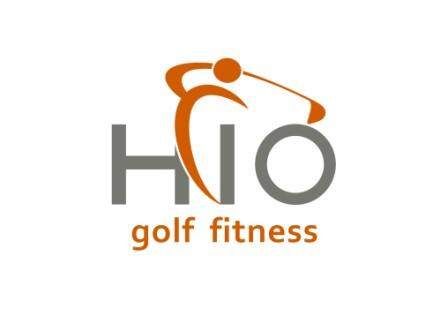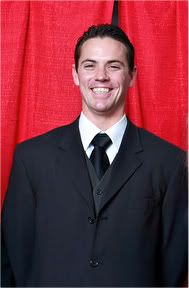
Thursday, June 18, 2009
That Didn't Feel Right

Thursday, June 4, 2009
Hanging Back?!?!?
This is a problem seen in many golfers who are trying to lift the ball and not use the club face to their advantage. It is also seen with golfers who have balance issues or rotation problems...It is often a consequence of early extension and slide.
So what exactly is hanging back?
- Improper weight shift: Your body is staying with the majority of its weight over the back leg.
- Poor Balance: An inability of your joints and ultimately your brain understanding where your body is throughout the swing path.
- Inexperience: Often when people begin to golf they don't understand that the clubs have different shapes for a reason and not just to frustrate you. Most beginning golfers think they must consciously life the ball off the turf, which can lead to numerous swing faults.
- Balance: Practice standing with your eyes closed. Be somewhere you can have some support if you are unsteady. Once you can stand with your eyes closed both feet on the ground and stay stable for 30 seconds, open you eyes and try standing on one leg. (Note here according to the Titleist Performance Institute the average professional that they have collected data on can stand for 16 seconds on one leg, eyes closed)
- Utilize Drills to change weight shift. I have heard golf professionals teach you to push of your back foot as opposed to staying on it. Others drill you by having your actually pick up your feet, which is one of my favorites that I have seen by a local golf professional. Set up five balls and get in a rhythm of hitting the grass in both the front and back swing with appropriate weight changes by picking up your feet...then walk forward hit one ball at a time. It is a fun drill and it really helps hone in on weight shift.

- Now in the bio mechanical functional approach to improving: IT IS SUPREMELY IMPORTANT to strengthen your core. Often times one simple set of seeming simple exercises can reduce swing faults dramatically as well as decrease chance for injury.
- Planks, Side Planks, Reverse Planks: strengthen your entire core in a static plane.
- Chops and Lifts: dynamic movements to improving core.
- Pelvic Tilts: If you do not know how to tilt your pelvis properly your core is not going to be as efficient as it can be.
Sunday, May 17, 2009
MAKING A DIFFERENCE

When you play the game of golf, you can have good days and you can have bad, you can even see that watching the golf channel. So what can you do to have more good than bad?
Albert Einstein put it well with “The definition of Insanity is doing the same thing over and over again and expecting different results.” I know that one of the best things that you can do is practice, practice, practice…but have you noticed that many times that can only get you so far. You hit a plateau or level spot and you cannot get any better.
So what do you do? MAKE A DIFFERENCE.
I have had the opportunity to watch golfers train outside of the golf course and the comment to me I hear is how is this going to help my slice or hook. And my response to them is what you have done so far that has worked to correct your ball flight. Has it made a difference?
I have the unique opportunity this upcoming week to combine my knowledge of the biomechanics of the swing and learn to how to efficiently use pilates to improve golf swing and decrease the chance of pain.
HIO Golf Fitness and Hole in One Pilates is combining to put on a spectacular two night event to make the introduce this concept in the bay area. As the week goes on and I learn more and more, I will be blogging and introducing this concept to you!
Tuesday, May 12, 2009
Directed Blog Post for the day
- Instruction
- Living the Dream Blog
- Fitness Tips
Thursday, April 23, 2009
USE YOUR TRUNK
As I was growing up playing this that and the other, I was always told the strength comes from the legs. This is mostly a true statement but in golf if your body does not know how to rotate the trunk efficiently your legs become just a pair of appendages.
- Seated rotation: sit with your feet and knees together, hold a band, tube, or cable machine. Hold the handle between your chest and your belly button and turn. Do three to six sets of 8 to 12. And do the individual sets at three speeds. Slow, Fast and Moderate!
- Supine 90/90 rotation: This may seem counter-intuitive. Lay on your back bring your hips up to 90 degrees and bend your knees to 90 degrees. Without allowing your shoulders to lift off the groud bring both knees as far as you can to the left and then all the way to the right. The first of 3 to 6 sets should be moderate paced and the next should increase speed.
- Standing Rotation with tempo/timing: Take a club and swing like a baseball bat in good rythm and timing. A two count is best both directions. Once you have the timing down every five full rotations swing as hard as you can in the direction you would drive the ball. This is a great exercise for both rotation and tempo.
Be sure to exercise with caution! As always consult a professional if you have questions.
Stay tuned for video footage for all exercises!
Friday, April 10, 2009
Is your Head on straight?

Of course your head is on straight, but why are you able to see these variations in the mirror. That is your body trying to make you see the world on a level plain. In order for your brain to function and "enjoy" being in your head it needs to get information from your eyes and put them in a level fie ld to tell your body what to do next. Well if you are laking motion in the upper part of your neck, your nervous system can become less than fully optimized, in turn it starts sending compromised signals to your body to adapt, which often leads to a domino effect. That adaption is what makes it appear like your head is not on straight.
ld to tell your body what to do next. Well if you are laking motion in the upper part of your neck, your nervous system can become less than fully optimized, in turn it starts sending compromised signals to your body to adapt, which often leads to a domino effect. That adaption is what makes it appear like your head is not on straight.
- Perceiving the next shot: If your "head is not on straight" or compromised with nervous system optimization the message from your brain to your swing can be alter. Your brain says you need to swing your hybrid with this club head speed in order to land on the back end of the green to sit near today's pin placement. Your body receives the message swing the club and hope it gets off the ground...well not that extreme but you get the point.
- Perfect angles and arcs: Your body and golf can be thought of in angles and arcs. If your eyes want to be on a level field they will get to 90/90 from the horizon. Your shoulders, hips, legs, and feet may then sit at varying angles for that to occur. When you pull your arms back for a swing it should be in a perfect arc but if the angles from your body are altered your swing must adapt. Now if you are able to optimize nervous system function and get your head on straight, it allows your body to communicate properly and restore itself.

Thursday, April 2, 2009
Is Your Hip Getting Around?
When working on improving your swing good hip stability and mobility is crucial.
According to the Titleist performance institute the average touring professional has at least 45 degrees of hip internal rotation and external rotation. Inability to rotate your hips can lead to a number of swing faults as well as various biomechanical and musculature deficiencies.
How do you test to see if you hips are rotating? It is simple! Take two clubs and put them at right angles to one another, stand with one foot next to a shaft and the other rested on the toe. Have a club held along your shoulders, held with your arms crossed, turn your entire body towards the club…did the club in your arms cross the club on the floor?
If no then you need to work on your hip rotation…repeat with the other leg.
Increase your Mobility
- Lay on your side, squeeze your knees together while lifting your foot towards the ceiling…repeat this 10 to 12 times and then switch sides.*
- Sit on a chair with your knees together (looks like and M or W), until you feel a stretch in your hips. Hold that for 8 to 12 seconds, relax and repeat two more times.*
*If you have had a hip replacement or pain during these exercise contact your health care professional, prior to doing these exercises.


